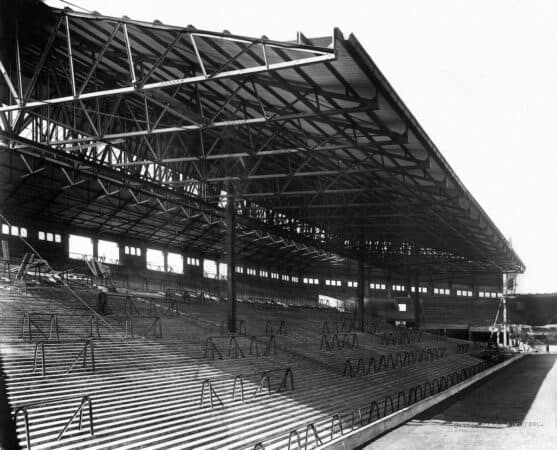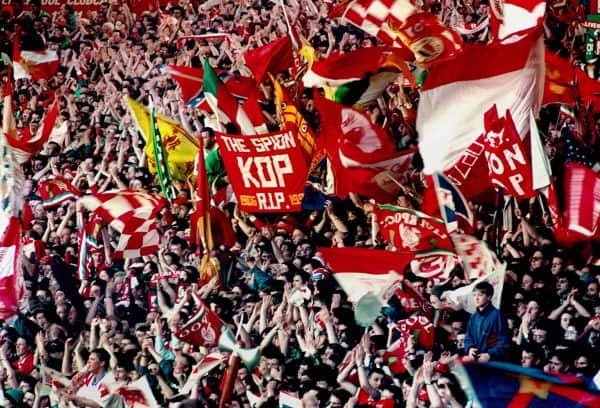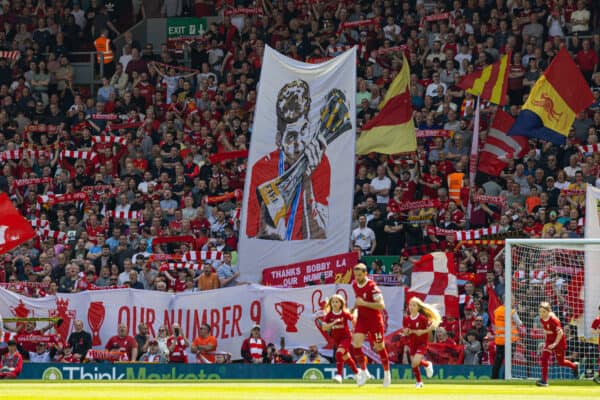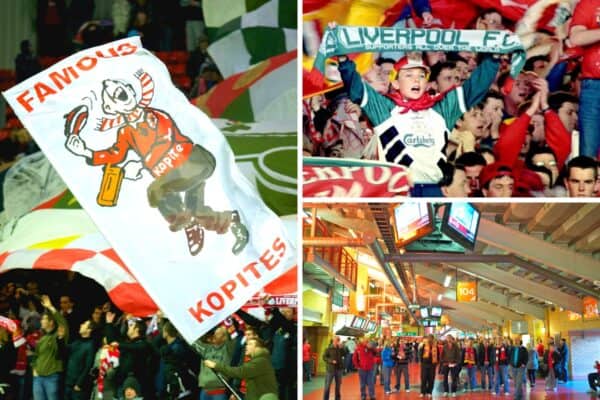The Kop is one of the most iconic stands in the history of football, but when was Anfield’s famous end built and how did it get its name?
Providing the heartbeat of matchdays at Anfield, the Kop end is an enormous part of the club’s history and heritage.
The stand currently has a capacity of 12,850, but prior to all-seated stadiums becoming compulsory in the top flight in 1994, it was capable of housing around double that figure.
The name originates from a battle during the Boer War in South Africa back in 1900, when members of the British army fought to capture a hilltop named Spion Kop – or Spioenkop in Afrikaans.
Three-hundred soldiers were killed in the process and many were from Liverpool, so it is claimed that survivors from the battle chose to honour their fallen comrades by naming the new stand at Anfield after the hill they had fought for.

As the Liverpool Echo‘s Ernest Edwards wrote in 1906: “No doubt this apt name will always be used in future in referring to this spot.”
Opened in 1906, the Spion Kop has since become an integral part of Liverpool’s identity and a key factor in the club becoming as famous as it has.
It was built to mark the Reds’ second league championship and was at one stage the biggest single-tier structure in Britain, becoming synonymous with the unique atmosphere Anfield created throughout the 1960s and 1970s.
Upon its completion, the stand held up to 25,000 supporters, while an extension in 1928 saw that capacity increase to well over 27,000.

Liverpool’s 1-0 home defeat to Norwich on April 30, 1994 was famously the final game in front of the original terrace, with Gerry Marsden invited to sing You’ll Never Walk Alone prior to kickoff to mark the occasion.
The Spion Kop was knocked down and restored later that year to comply with the Taylor Report, which stemmed from the inquiry following the Hillsborough Disaster in April 1989.
Just like the original, the Kop is a one-tier stand and sits behind the goal opposite the Anfield Road End.
Ahead of the 2021/22 season, 27 years after the original Kop’s final day against Norwich, rail seating was introduced at the back of the stand as part of a trial to improve safety.

Anfield’s replacement structure remains a key part of the stadium’s character and continues to create the atmosphere that gives Liverpool supporters their worldwide reputation.
The new stand has seen and inspired many memorable days and nights, including two Champions League semi-final victories over Chelsea and the historic 4-0 win over Barcelona in 2019.
It also played host to the Reds finally getting their hands on the league title after a 30-year wait, but unfortunately, few could witness captain Jordan Henderson‘s shuffle in the flesh due to the restrictions imposed as a result of the COVID-19 pandemic.
Let’s hope there are plenty more incredible memories still to be made in front of one of football’s most famous stands.




















Fan Comments